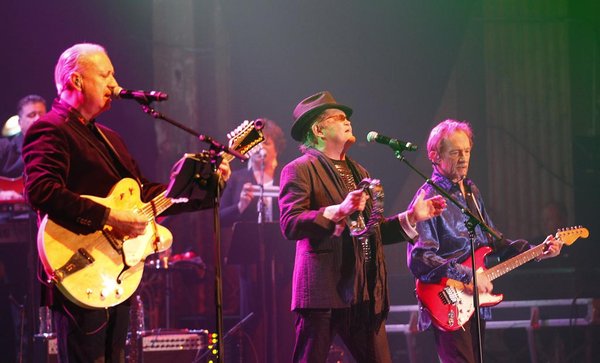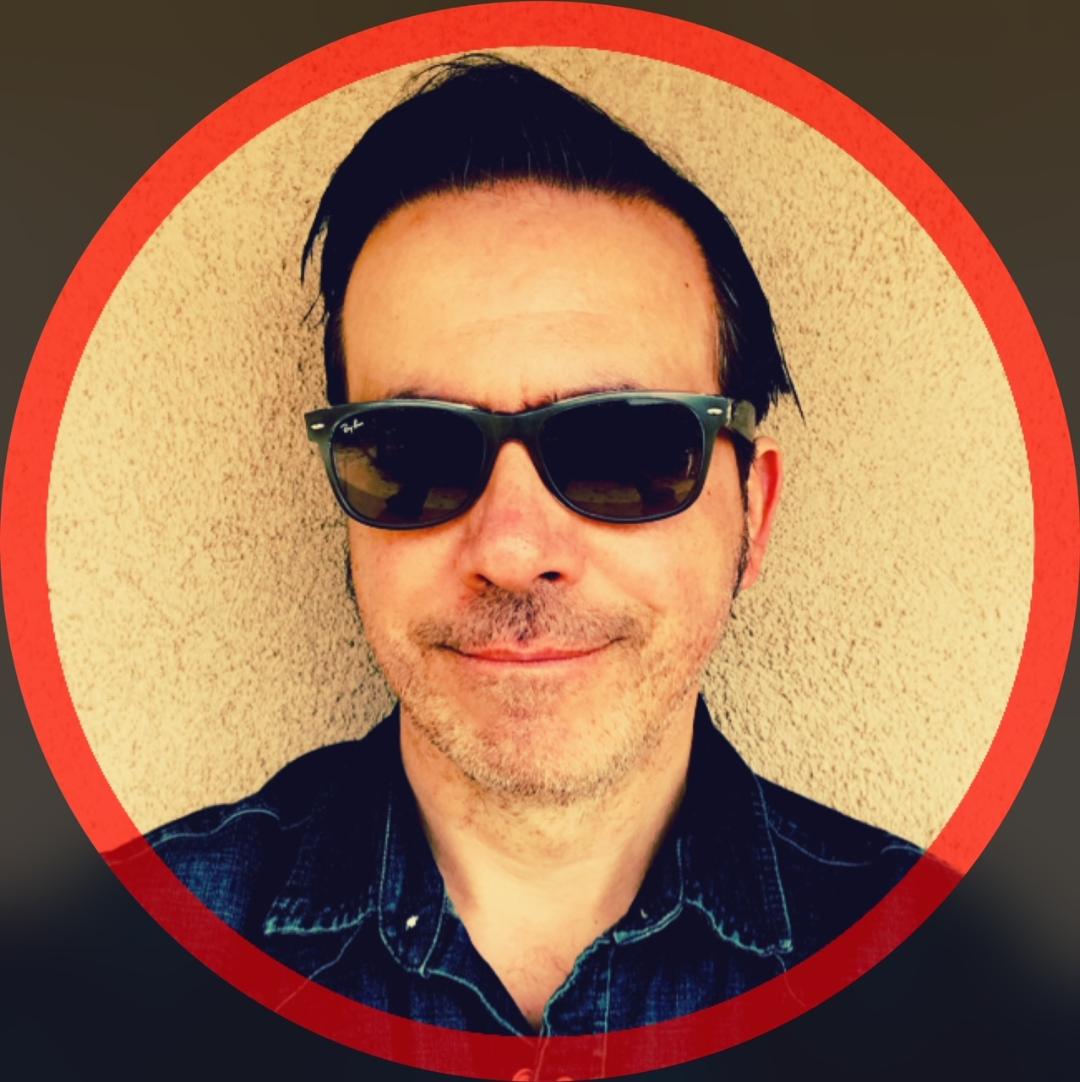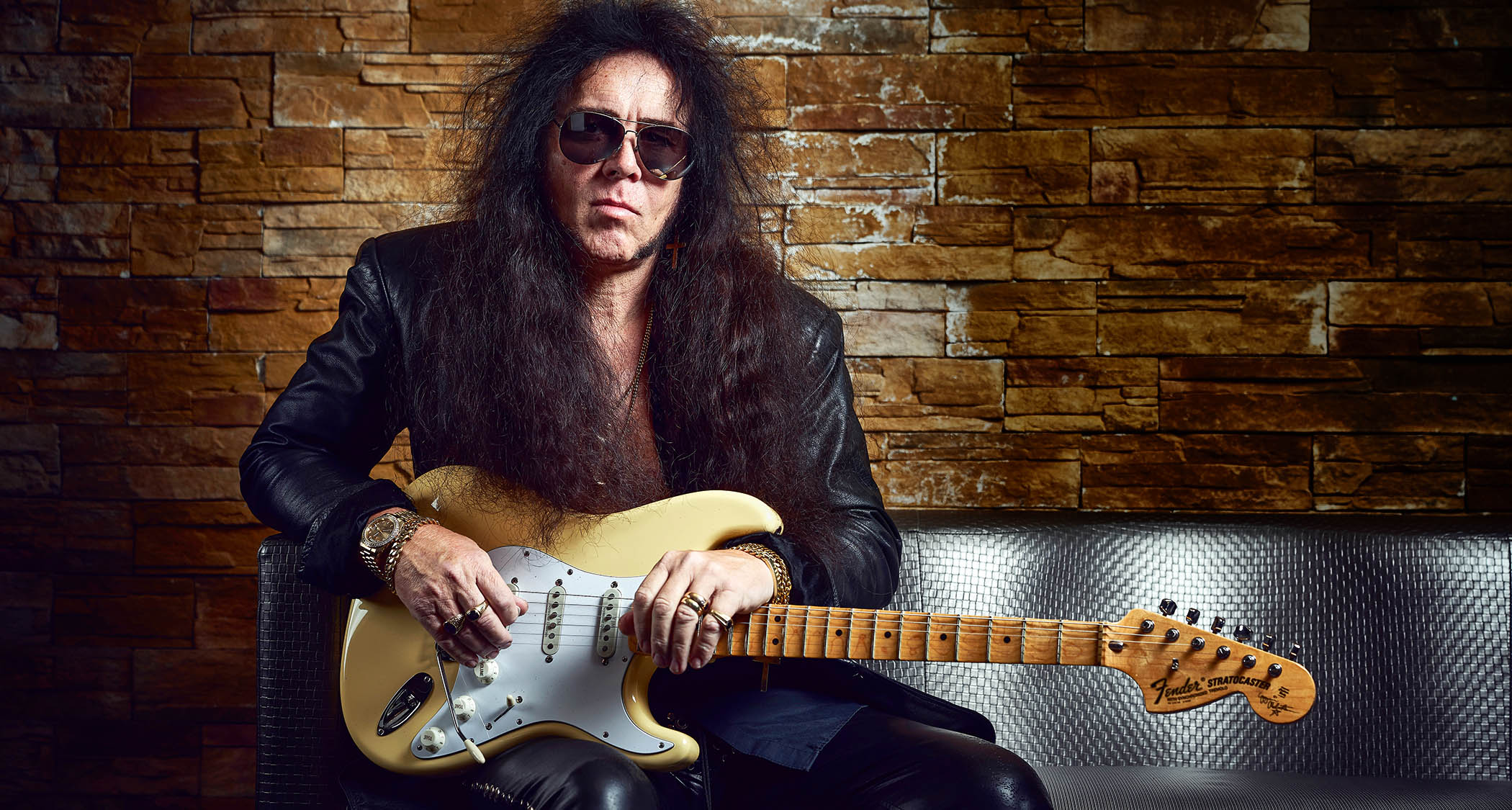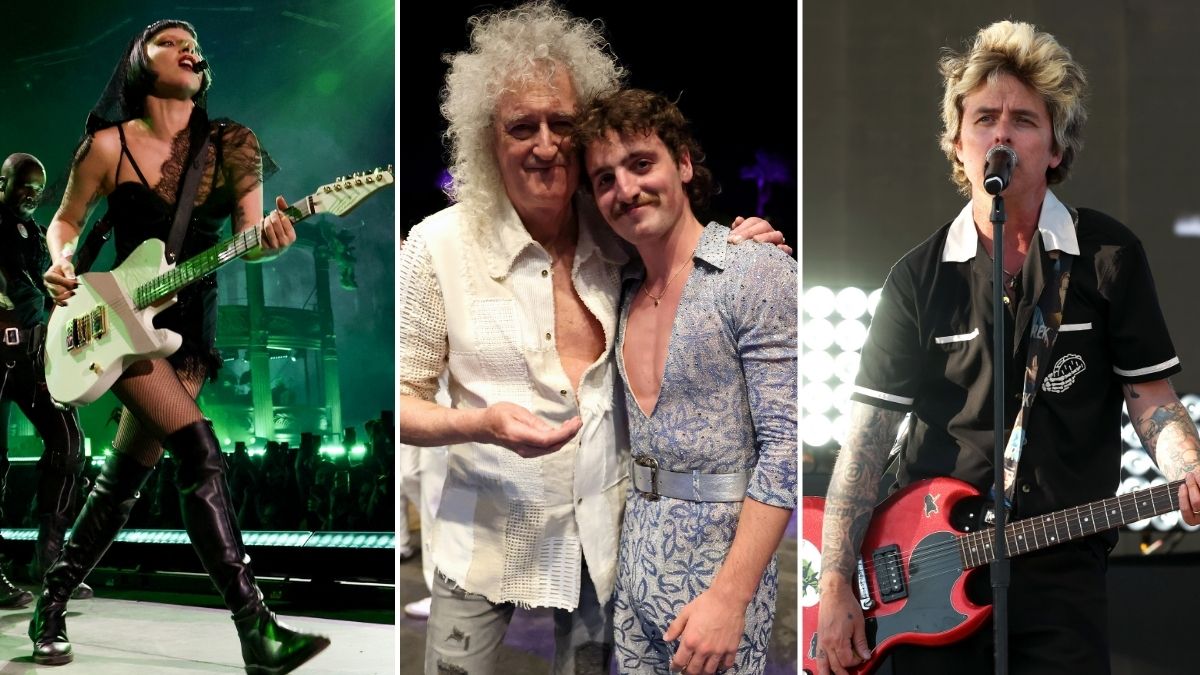Michael Nesmith, Micky Dolenz and Peter Tork Talk Monkees Tour, 'Headquarters' and Jimi Hendrix

A mid-2013 Monkees concert is a powerful reminder of why these guys were major pop icons in the mid-'60s.
The band's three surviving members — Michael Nesmith, Micky Dolenz and Peter Tork — dole out the hits like a vintage jukebox at a family-style restaurant.
But a modern Monkees show serves up a good deal more, including a pinch of the banter that made the Monkees everyone's favorite wise-cracking, prefab pop band — and, perhaps best of all — a generous serving of Nesmith's music. Since the band resumed touring in the late '80s, a Nesmith-infused Monkees performance had been as rare as a Sasquatch sighting.
Until last year, that is.
Before Davy Jones died in February 2012, all four Monkees had been discussing a tour. Eight months after Jones' passing, Nesmith, Dolenz and Tork followed through, kicking off a brief US trek that paid homage to Jones and his legacy. This summer, however, the band's itinerary is expanded, as is their emphasis on what is considered their finest stretch of albums, the four releases from 1967's Headquarters through 1968's Head.
From Tork's impressive multi-instrumental prowess to Nesmith's mesmerizing country charm and Dolenz's science-defying vocals (The 68-year-old Dolenz is the Paul Rodgers of the former-teen-idol set), a Monkees show is a first-rate ode to a quickly fading era of American pop culture.
I recently spoke to all three Monkees about their current tour, distant past, roots, gear, Headquarters and more.
Get The Pick Newsletter
All the latest guitar news, interviews, lessons, reviews, deals and more, direct to your inbox!
A lot of artists, including some of the hard rock and metal guys we speak to on a regular basis, love the Monkees. Yet it's not a stretch to say some people still take a condescending attitude toward the band. Did you guys ever look down on your legacy? Did you ever feel condescended to?
NESMITH: No, I never thought of the Monkees negatively. The public rejection of the show and the band was hard to take but understandable. People were confused in those early days of TV, especially about what constituted authenticity, and there was a fear that corporate interests were at work and somehow manufacturing a hit. Everyone in the arts knows this is impossible, but it was an easy sell and an easy scandal to create by the press of the times. So a few journalists led the charge of "condescension."
But as you point out, that charge fell on many deaf ears, especially among the kids at the time who not only got a good taste of well-made music but also understood TV and where it fit in their life. Many very accomplished players started their musical careers based on those Monkees shows and records, and I feel most gratified to have been a part of that. It is a nice legacy, and I'm proud of it and happy to see it finally get the recognition.
Given that you didn't know each other and came together at random when you auditioned for roles on the TV show, were you surprised by how beautifully your voices blended on the records? Was that a happy accident?
DOLENZ: One of the producers once said, "They caught lightning in a bottle." They cast four guys that had different talents and different voices but could all sing and act, to some degree. When we started singing together and blending, we weren't starting from square one. We had fundamental skills; then it came down to arrangement and harmonizing, and then we sort of got lucky, especially in terms of the blend Mike and I had. I always thought that was really kind of cool.
TORK: The producers [of the TV show] were Beatles fans themselves. They weren't just old, cigar-chomping TV producers going, "Kids will love this." They didn't want professional kids, really. Well, Davy was professional, but he had a lot of spark and Micky was a funny guy from the start, so they knew they were getting something interesting. But I refute any claims that any four guys could've done what we did. There was a magic to that collection. We couldn't have chosen each other. It wouldn't have flown. But under the circumstances, they got the right guys.
NESMITH: Happy accident.
Mike was already a songwriter while the show was in production, yet the band was being handed songs — by other composers — to record. Did any of you resent that at any point?
NESMITH: I liked the Monkees songs quite a bit. I wasn't much of a pop writer. I tended, and still do, toward country blues and lyrics with little moments in them — all pretty far off the pop songs of the '60s. No resentment at all.
DOLENZ: Not from me. I was hired to play a wacky drummer on a TV show. That's how I approached it, and to some degree, I still do. The Monkees, the way I looked at it, wasn't a band, it was a television show about a band. An imaginary band that existed only on that television show at that beach house, which was a set, and the adventures we had were imaginary, obviously.
TORK: I wasn't resentful because we had songs by Tommy Boyce and Bobby Hart, Carole King and Neil Diamond. "Shades of Gray" was written by Barry Mann and Cynthia Weil — masters. We would play these songs and say, "Yeah, that's a good song. Let's do it." And that's all we cared about, really. Having great songs.
That said, I wish we didn't have to go through the hassles we did to get to be musicians on the records. I didn't have any desire to get rid of Don Kirshner. Don had the magic touch. "By all means, bring us songs, Donny! We just want to be the musicians. And we can bring something extra to these records and make them more fun for the audience. You bring the songs, we bring the fun. Let's work together!" But Donny took it personally and went off in a huff. A huff, at the time, was like a Smart Car now [laughs].
How did the Monkees decide who'd sing which song?
NESMITH: We didn't at first. When we started producing our own ideas, we all would more or less agree. It was easy to arrive at who sang what song best.
DOLENZ: We had much more control on the set, when we were acting. We improvised and made a lot of contributions. But in the studio, Mike and Peter certainly wanted to. Peter might tell you the story of going into one of the early sessions with his bass and they said, "What are you doing here?" Mike has horror stories about submitting songs. One of the first songs he submitted was "Different Drum," and they said, "That's not a Monkees tune" [laughs]. Eventually we had that big battle with Kirshner and the producers. We basically wanted to get some sort of control.
Peter, not to stick with the resentment theme, but were you frustrated over the fact that the other three guys sang most of the songs?
TORK: There's some frustration there, but in retrospect, I can see I wasn't the guy for most of those things. I did do the one song, "Your Auntie Grizelda," during the first two albums. On the second album, I had a few lines here and there, and I shared a lead vocal with Micky on "Words." I think there's a song or two I might've done as well or better than the other guys because of the dramatic meaning of the song. There's a song on Headquarters called "Early Morning Blues and Greens." I look back and I think, "I should've fought to do that song." It has me written all over it, and I should've been the guy who sang it.
Did you know in advance that the creators of the TV show wanted you to be the ...
TORK: The dummy?
Well, yeah.
TORK: They actually chose me and then said, "Do you mind playing the dummy?" They didn't say, "We're choosing you if you'll play the dummy." They said, "Do you mind?" I had developed that character on the Greenwich Village stages when I was a basket-passing, coffee house folk singer in the early '20s [laughs]. One of the reasons I was able to play that character so well was that I'd been working on it for quite a while.
Did the song arrangements come pre-fab, including the harmonies?
NESMITH: The first two albums were a mix of New York publishing demos and our own studio arrangements and vocal stuff. From Headquarters on, we called all the musical shots.
TORK: We arranged Headquarters ourselves in the studio, pretty much. I think I'm not over-blowing my own horn when I say I had the broadest view of what a good arrangement is. If a song fell into a traditional format, if it came to us that way, we didn't have any arranging to do, except maybe what's going to be the opening lick. But "Do we have an instrumental hook?" or "Do we skip a hook and make the hook a vocal tagline?" Those kinds of questions, we solved amongst ourselves.
How were the songs picked? Also, were they ever written around the shows, or was it the other way around?
NESMITH: We all wrote, or had friends who did, and we listened to a lot of demos from various publishers. The songs in the show weren't critical to the story lines, such as they were, and so almost any song would work in any show. And by the time we were producing the music ourselves, we were just using songs we liked.
Mike, what impact did the success of the show have on you as a songwriter? Also, what impact did the success of "Mary, Mary" (which was recorded by the Paul Butterfield Blues Band before the Monkees recorded it) and "Different Drum," a hit for Linda Ronstadt and the Stone Poneys, have on you as a songwriter?
NESMITH: My primary craft is writing, and song writing was always what moved me along. I fell into the folk scene early on because of the importance of the song and lyrics there and then followed that with some rock and roll and country efforts.
When I got on the show, the pop community was strange to me and, by and large, didn't respond well to my songwriting or singing. The show didn't do anything to help that. I was always outside the main effort of the show's music. I would've liked to have been more accepted as a pop song writer, but there was little I could do about it since I didn't know how to write a pop song. I love hearing other people sing my songs. "Different Drum" and Butterfield's and Run-DMC's "Mary, Mary" were and are real high points for me as a writer.
Did you feel ignored or passed over when the Byrds, Dillards and other bands got credit for leading popular music in a country direction in 1968, even though you'd already been writing and singing that sort of music with the Monkees?
NESMITH: I don't worry about those kinds of things. I'm very comfortable with the music I made and when I made it.
Micky, even though you're seen as the drummer in the Monkees, you started off as a guitarist. How did you get started?
DOLENZ: When I was 9 or 10, my father got me a Goya guitar, and I started learning Spanish guitar. My first public appearance was at Kennywood Park in Pittsburgh. I was on a press junket for a TV series, Circus Boy, which was about a little kid in a circus who had a pet elephant. They put the elephant and me on a train, and we went across the country, doing press stops and public appearances.
I'd come out on stage with my little guitar and sing my songs, and the elephant would come on stage and do a bunch of tricks. So my first gig was opening up for an elephant [laughs]. But I started to get serious about classical guitar. I was learning Segovia stuff — I was only 12, but I was into it. I'd take my guitar to parties in high school, and I quickly discovered girls liked the Kingston Trio better than Segovia [laughs]. So I started learning folk music and some Peter, Paul and Mary.
I went on the road with a couple of cover bands before the Monkees, mainly singing, but I'd pick up a guitar and play along. My Monkees audition piece was "Johnny B. Goode" by Chuck Berry, which I still do in my show.
Peter, you once said the live version of the band, based on the skills of each member, could have — and maybe even should have — been composed differently. Can you explain that?
TORK: Mike and Davy had splendid timing. They should've been the rhythm section. I'm a better guitar player than Mike; he should've been the drummer or the bass player and Davy the drummer. His time was fabulous, and he learned anything you wanted him to do. There were times we said, "Geez, I want to play keyboard. Mike's on guitar, Micky's ... we need a bass player! Davy, put your fingers here, pluck now." Boom! He'd play bass that night. Micky should've been down in front — and he can play guitar. He should've been the rhythm guitar player.
But it worked out. If you listen to the 1967 tour CD, it's not that bad. We were a bunch of, you know, young kids. But we were playing. When we were making a pilot, there was a lull in the activity and we were on the bandstand with instruments in our hands, and there were amps, and they were real, and we fired them up, and we played some covers. And people got up and danced. We had never played a note together previously.
Present, one of the albums you recorded after Peter left the band, will be reissued in August as an expanded, remastered box set. How involved were you with the reissue process, and what do you remember about recording Present?
DOLENZ: We're not very involved. Occasionally, they'll ask me if I have any comments about it. But they just do a repackaging of the original stuff, and I think they do a great job.
As far as memories, I don't have many. I recall recording Headquarters for obvious reasons. But for the most part, we would just have studio time booked and we'd go in and do tracks and vocals. It was a movable feast. We were in the studio all the time. And then at some point we would decide which tracks were finished and were gonna go on the next album. So it wasn't like we started Monday and three months later, we said, "This is the album and we're all done." It was sort of a continuous process. The songs that are on that album might've been recorded earlier or over a longer period of time.
Mike, what happened to the original Monkees 12-string Gretsch you played in the TV series? Also, I saw you on the 2012 tour (and last weekend in Philadelphia), and I notice you're playing a newer Gretsch 12-string. Do you have any ties with the company, or do you just consider it a "Monkees guitar"?
NESMITH: The show Gretsch was stolen and is at large somewhere in the hands of a thief or a thief's customer. Gretsch has been supportive and very helpful, although the Monkees' television status has always kept the interest of instrument makers down regarding me. I also am not a very good player, so I don't get the same attention as more accomplished players.
Considering all that, Gretsch has been very helpful and built me this new guitar. It is getting nicely tweaked — I call it my "Blonde Beauty" — and up to speed for the shows. It sounds great. Also a great new string set from GHS has really made a difference; they're vibrant and have lots of ring. I have a new (used) Fender amp I got from the company at an artist's price, and I'm using that on this tour, and it really sounds terrific. However, I'm not willing to so easily trade on my audience, so I took off the Fender logo and replaced it with a "Kirkland Signature" logo — just for the fun of it.
But Fender and Gretsch have been pretty generous given the fact that I can't play worth a flip.
Peter, I've always considered you the most natural musician of the bunch. Is that accurate?
TORK: No. The best natural musician in the bunch was Davy. He never hit a bad note. My pitch is not as certain, Micky's isn't as secure. Mike's is, but he doesn't have the emotional range Davy had. Davy could sing Broadway, ballads and rock. He could do anything. What I am, among these guys, is the best trained, the only one who could read and write music. Michael wrote the horn and cello part to "Shades of Gray." He wrote it in his head, he sang it to me, and I notated it, and I notated it for the French horn. I'm the only one of the four of us who was in possession of that body of information. I took piano for six years and French horn for a couple, plus music theory in college.
And Micky is one of the better pop singers of all time. Not too long ago, I told him, "You must be one of the top 20 pop singers of all time." He said, "20?" I said, "OK, 15." He said, "15?" I said, "OK, 10, but that's my best offer." And Mike Nesmith is extraordinarily rigorous in pitch and time. And he's got imagination, and he's a very hard worker. I'm not. The only thing I have going for me is that I'm trained.
DOLENZ: Peter also plays more instruments. I only play guitar and, of course, drums when I'm doing a Monkees show. Peter would be the most proficient or knowledgeable about music and playing. He plays guitar, piano, French horn. He plays just about any instrument he picks up. But I'd say Mike is probably the most prolific, in terms of song writing. He is very proficient on guitar, especially that big 12-string he plays all the time.
Which Monkees album was the most fun to make and why?
NESMITH: Headquarters — because the kids got to drive the big car. Fun.
TORK: Actually, it's a toss-up for me. You understand, the first two albums don't count. We weren't there, by and large. Headquarters was very satisfying from that point of view. And then we cut to three decades later, and there's this album called Justus [released in 1996]. Micky's drum work was spectacular on that. I don't know if you've listened to that CD, but it's not bad. There are things I would've done differently if I had a bigger voice in the proceedings. You've got four egos, and one guy can't sway things too much. But it had some good fresh sounds — modern, contemporary sounds in the guitar, bass and keyboards.
Is any new Monkees music in the works or planning stages?
NESMITH: Not now.
What are the main differences between the 2012 and 2013 Monkees tours?
NESMITH: The show is getting better in terms of the video, song selection and more. The performances are all up an order of magnitude.
Speaking of tours, the Monkees toured with Jimi Hendrix in the '60s. Did anyone pick up any pointers from him?
DOLENZ: I didn't, but then again, I was playing drums at the time. But all of us were blown away by his talent. I was in New York at a press junket for the Monkees, and somebody said, "You've gotta come down to this club and see this guy play guitar with his teeth." And sure enough, we go down to this small club, and he's there playing the guitar with his teeth.
Fast forward to the Monterey Pop Festival, and I'm there watching all the acts: Ravi Shankar, the Who and everything. All of a sudden, these three guys come on stage dressed in psychedelic outfits, and the guitar player started playing guitar with his teeth. I said, "Hey, that's the guy I saw in New York months ago, playing guitar with his teeth!" [laughs] We happened to be looking for an opening act, and I suggested Jimi because he was incredibly talented but also very theatrical.
TORK: I was talking to Jimi while I was just learning vibrato on the guitar. I had learned to "pull" vibrato, but you can't pull on the first string, so you have to learn to "push" vibrato. I was saying to Jimi, "I'm just beginning to get that push vibrato." He said, "Yeah, you push against the weight of the guitar." And my eyes lit up. "Mother of God, that's how he does it!"
So you have to push and be conscious of the weight of what you're pushing against, not just pushing the string. There's nothing more annoying than somebody who has "panic vibrato," when they shake their fingers as hard as they can. Panic vibrato is the most annoying, unmusical thing you can think of. Hendrix's vibrato was so engaging, and it involved you and it was earth-shaking. When he said, "You work against the weight of the guitar," suddenly I was pushing stuff around in a big way. That was a wonderful clue.
I also met Stevie Ray Vaughan by chance on the road in Australia or something. I said, "Where do you get that tone?" And he said, "It comes from the heart, man." That's all he would say. And I'm saying, "What effects do you use? How loud do you turn up?" But all he said was it comes from the heart.
I'm reminded me of a story about Jascha Heifetz, the violinist. He was talking to the press, and they said something about his Stradivarius. He said, "You think it's about the Stradivarius? Go down to the local music shop and get me a $75 violin." He played the $75 violin, and they were astounded that it had the same tone. Of course, he did say the $75 violin had some bad spots. But the tone is not in the instrument. The tone is in your heart, in your hands.

Damian is Editor-in-Chief of Guitar World magazine. In past lives, he was GW’s managing editor and online managing editor. He's written liner notes for major-label releases, including Stevie Ray Vaughan's 'The Complete Epic Recordings Collection' (Sony Legacy) and has interviewed everyone from Yngwie Malmsteen to Kevin Bacon (with a few memorable Eric Clapton chats thrown into the mix). Damian, a former member of Brooklyn's The Gas House Gorillas, was the sole guitarist in Mister Neutron, a trio that toured the U.S. and released three albums. He now plays in two NYC-area bands.
“This particular way of concluding Bohemian Rhapsody will be hard to beat!” Brian May with Benson Boone, Green Day with the Go-Gos, and Lady Gaga rocking a Suhr – Coachella’s first weekend delivered the guitar goods
“A virtuoso beyond virtuosos”: Matteo Mancuso has become one of the hottest guitar talents on the planet – now he’s finally announced his first headline US tour










